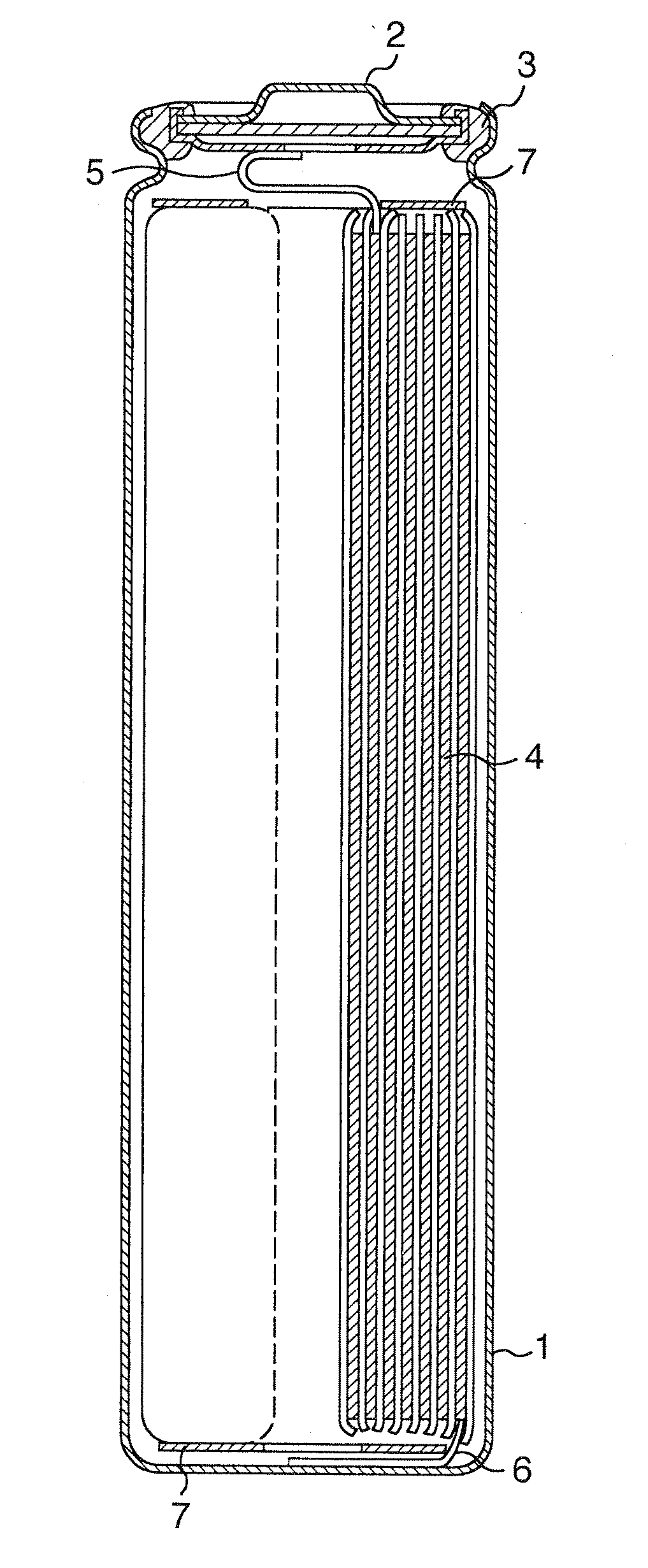Non-aqueous electrolyte secondary batteries and devices using the same
a secondary battery and non-aqueous electrolyte technology, applied in the field of secondary batteries, can solve the problems of deteriorating discharge characteristics, reducing additives and decomposing on the surface, and deteriorating cycle characteristics and storage characteristics that are essential for batteries in ordinary use, and achieve the effect of ensuring safety at overcharging
- Summary
- Abstract
- Description
- Claims
- Application Information
AI Technical Summary
Benefits of technology
Problems solved by technology
Method used
Image
Examples
example 1
[0104]FIG. 1 is a longitudinal sectional view of a cylindrical battery used in this example. In FIG. 1, the reference numeral 1 indicates a battery case made by processing a stainless steel plate having resistance to organic electrolyte, 2 indicates a sealing plate provided with a safety valve, 3 indicates an insulation packing, 4 indicates an electrode plate group, and a positive electrode and a negative electrode between which a separator is interposed are rolled a plurality of times into a spiral form and inserted in the case 1. A positive electrode lead 5 is drawn from the positive electrode and connected to the sealing plate 2, and a negative electrode lead 6 is drawn from the negative electrode and connected to the bottom of the battery case 1. The reference numeral 7 indicates an insulation ring, which is provided at the upper and lower portions of the electrode plate group 4. The positive electrode, the negative electrode, and others will be explained in detail below.
[0105]...
example 2
[0108] Cylindrical batteries of spiral type were made in the same manner as in Example 1, except that t-butylvinyl ether, methyl methacrylate monomer, vinylcyclohexane, and 2,3-dimethyl-1,3-butadiene which were the organic compounds of the formula (2) were used as the additives to the electrolyte. The thus obtained batteries were referred to as batteries 10-14 of the present invention.
example 3
[0109] Cylindrical batteries of spiral type were made in the same manner as in Example 1, except that tribenzylamine and N-phenyl-dibenzylamine which were the organic compounds of the formula (3) were used as the additives to the electrolyte. The thus obtained batteries were referred to as batteries 15 and 16 of the present invention.
PUM
 Login to View More
Login to View More Abstract
Description
Claims
Application Information
 Login to View More
Login to View More - R&D
- Intellectual Property
- Life Sciences
- Materials
- Tech Scout
- Unparalleled Data Quality
- Higher Quality Content
- 60% Fewer Hallucinations
Browse by: Latest US Patents, China's latest patents, Technical Efficacy Thesaurus, Application Domain, Technology Topic, Popular Technical Reports.
© 2025 PatSnap. All rights reserved.Legal|Privacy policy|Modern Slavery Act Transparency Statement|Sitemap|About US| Contact US: help@patsnap.com



